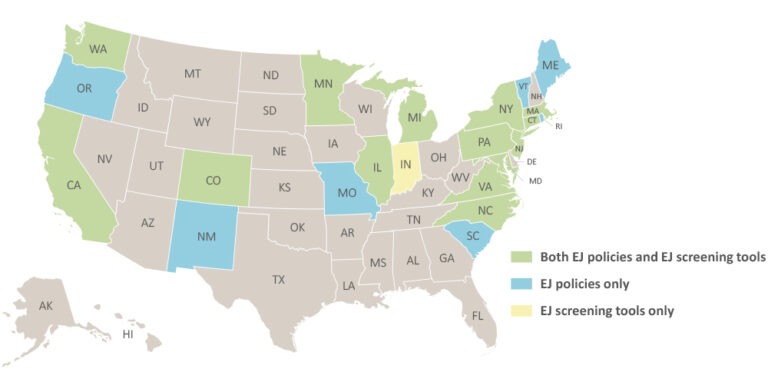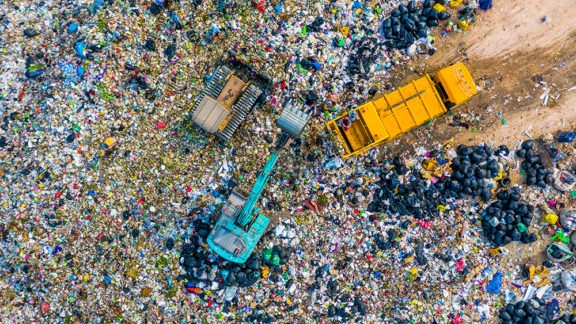How are you setting your strategy?
As environmental consultants, we hear questions from many clients about environmental justice (EJ). They’re wondering what the current focus on EJ means for them, whether that focus will continue, and how to create an effective and actionable EJ strategy.
EJ might seem like a new concept, but the term has been around for several decades. In recent years, EJ has risen in prominence at both the state and federal levels. Offices of Environmental Justice have formed within multiple agencies, laws have been passed, policies have changed, and grant guidelines have shifted. With over four decades of combined experience tracking environmental trends and forging constructive stakeholder relationships, we can confidently say that the current policy focus on EJ will not fade.
There are multiple benefits to developing an EJ strategy. Companies that don’t pay attention to the evolving EJ landscape may face permitting, enforcement, reputational, and relationship risks. And on the flip side, a focus on EJ doesn’t have to be a protective maneuver — it can also support your company’s environmental, social, and governance (ESG) goals, bolster stakeholder relationships, and make meaningful improvements in communities.
With the current and anticipated ongoing focus on EJ, understanding how you can position your organization is more important than ever. Read on to learn more about ways you can incorporate EJ into your business strategy.
Staying current in an evolving landscape
In practice, EJ will look different for different companies. For example, some will focus on risk mitigation or pollution prevention. Others will need to make improvements that address the underlying factors contributing to a community’s EJ concerns — lack of green space, traffic generated by businesses, or legacy contamination issues.

A key component of determining how your company might engage with EJ is understanding which communities have EJ concerns. EJ concerns in a community are typically characterized by harms and risks. Some communities are disproportionately affected by historical pollution burdens, which, when combined with socioeconomic stressors such as poverty, linguistic isolation, and lower levels of education, can result in more adverse health and economic impacts. However, there is no single definition of EJ, which is evident in the large number and variety of EJ screening tools that are available. Tools like the U.S. Environmental Protection Agency’s EJScreen or the federal government’s Climate and Economic Justice Screening Tool show how environmental and socioeconomic factors intersect across geographies. While these tools can provide data and perspective on community concerns, they don’t reveal everything, such as public sentiment or local data. Nor do these screening tools recommend specific actions or tactics. That’s where an EJ strategy comes in — it provides a roadmap for addressing EJ concerns.
It’s challenging to keep up with and interpret state and federal regulatory, permitting, and funding actions on EJ. This is yet another reason companies can benefit from a proactive — not reactive — EJ strategy.
Working with public sector partners
With the rising prominence of EJ at the state and federal levels, there is an increased focus on EJ in the public sector. By preparing an EJ strategy, you can position yourself to work more productively with public sector partners.
Many federal grants now require applicants to demonstrate how EJ has shaped their application and will inform future projects. This is especially key as legislation like the Bipartisan Infrastructure Law and the Inflation Reduction Act continue to swell agency coffers with grant funding. There are also impacts at the state level, including funding and permitting decisions. As of early 2023, more than 20 states have enacted EJ policies that define EJ or overburdened communities; stood up dedicated EJ task forces, offices, and commissions; established screening tools, impact reports, and scorecards; and mandated community involvement in environmental and land-use decision-making.

Developing an EJ strategy speaks volumes, not only about your firm’s commitment to this issue but also about your knowledge of the wider policy and regulatory landscape. A programmatic or enterprise-level EJ strategy can also help support broader company ESG goals, build constructive relationships with the communities you serve, and maintain brand reputation with business partners, investors, employees, and other stakeholders.
Components of an effective EJ strategy
Your EJ strategy will be unique to your organizational and situational needs, but there are some common approaches and tools that we use when developing an EJ strategy.
Using EJ screening tools to understand local context
The federal government and many states have developed publicly available EJ or equity screening tools that provide access to environmental, demographic, and socioeconomic data. These tools can help companies better understand the communities in which they operate and potential EJ risks.
How we can think of EJ
- Demonstrating care for our communities
- Understanding community concerns relating to historical environmental liabilities and cumulative impacts
- Informing mitigation and remediation solutions, getting community buy-in
- Considerations for permitting new facilities, including renewables
- Developing robust community engagement plans
- Enhancing stakeholder relationships and reputation
- Mitigating risk across our portfolio
While EJ screening tools can be a helpful starting point, they have several limitations and challenges. Each tool uses different datasets, and some require an experienced user to navigate them. They provide descriptive results but cannot be the only source of information — local data and public sentiment are also important. To fully understand their EJ risks, companies should conduct site-specific assessments. These assessments typically consider results from screening tools but supplement that information with site-specific factors such as current operations, potential community risks, and historical impacts.
Improving internal alignment
For companies just beginning to develop an EJ strategy, internal education is often an important first step. For example, we recently began helping a client develop its plan to address EJ concerns at sites across the country. In discussions with stakeholders, we learned that workers at those sites didn’t have a unified understanding of what EJ entails or why it matters to their work. We developed training materials and a workshop to facilitate alignment, which in turn has helped the company align goals and internal communications.
Developing a communications strategy
Sustained, responsive communication with community stakeholders and regulators is essential to EJ strategy. Companies could consider how they will prepare for tough questions about their own EJ track records, as well as about environmental and health issues not related to their operations: Communities will often bring all their concerns to the table, and companies need to know how to field questions on those concerns to foster good relationships and build trust.
From ESG to community engagement or permitting decisions, addressing EJ as part of your business strategy or operations is a critical business requirement, and it’s only going to become more essential moving forward. More information is better — for your firm, your community, your reputation, and your relationships. Reach out with questions, and let’s start a conversation to put your firm on a solid forward footing that looks good and does good — for everyone.
Published: 5/3/2023
- Aerospace
- Energy
- Oil and gas transmission
- Electric transmission and distribution
- Manufactured gas plants
- Industrial and manufacturing
- Manufacturing
- Mining
- Contaminated site management
- Environmental due diligence
- Environmental risk assessment
- Sustainability
Authors

Market Leader, Energy

Senior Technical Expert, Hydrogeologist

Technical Expert




